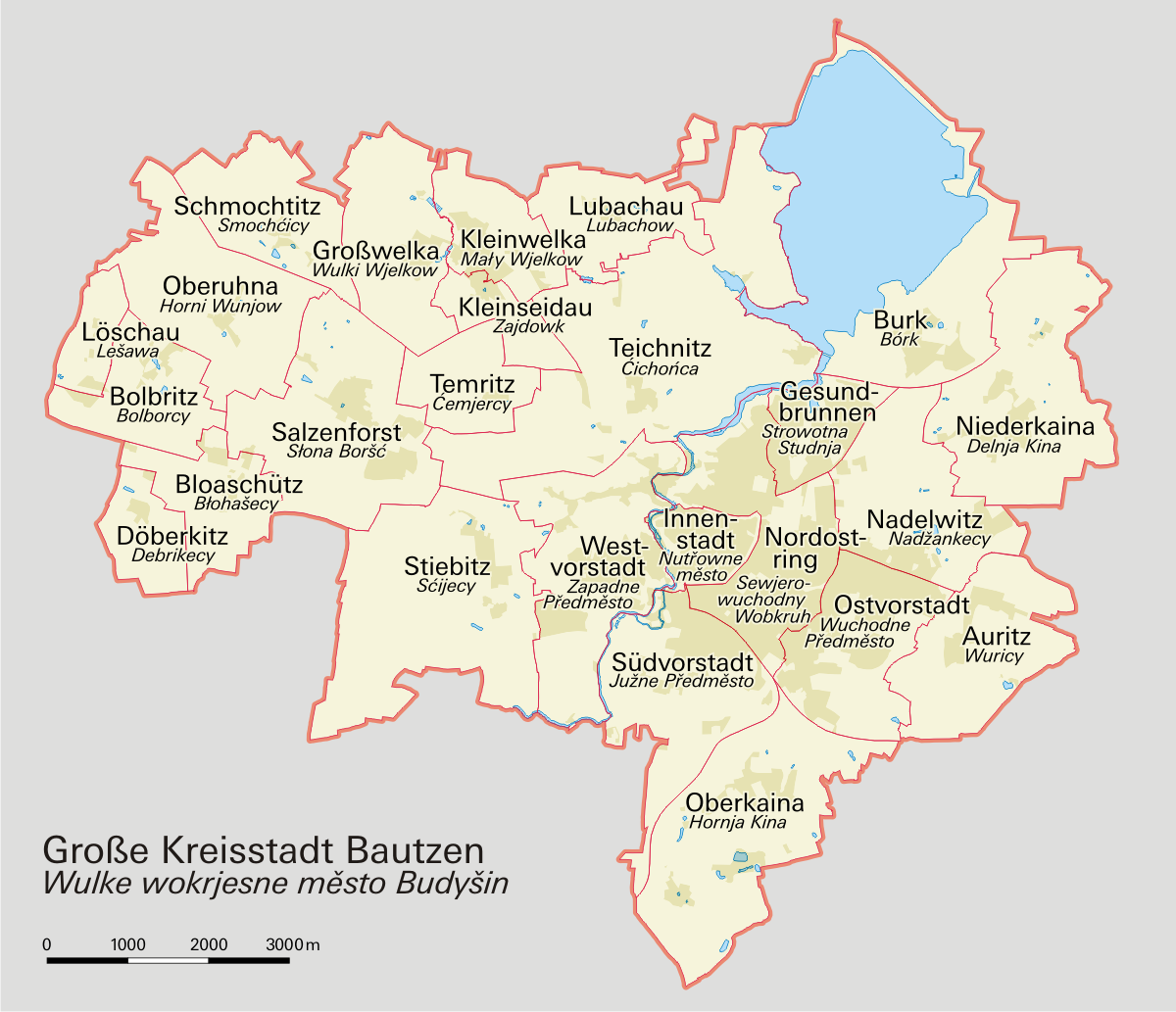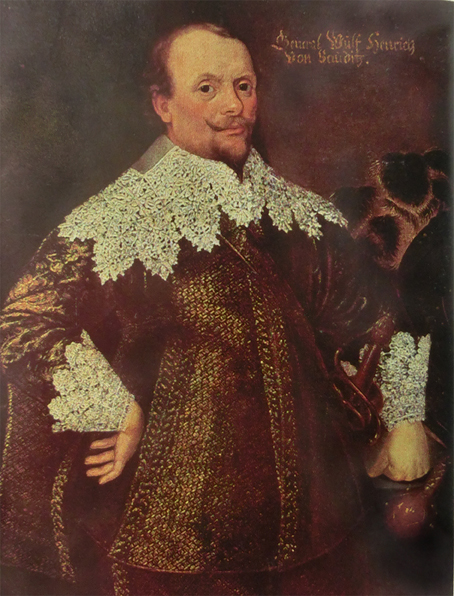|
Radibor
Radibor (German) or Radwor (Upper Sorbian, ) is a municipality in Saxony in Germany. It is situated in Upper Lusatia about 10 km north of Bautzen Bautzen () or Budyšin (), until 1868 ''Budissin'' in German, is a town in eastern Saxony, Germany, and the administrative centre of the Bautzen (district), district of Bautzen. It is located on the Spree (river), Spree river, is the eighth most ..., which is also the main city of the District of Bautzen to which Radibor belongs. Radibor was first mentioned in a written source in 1359. Its name is of Sorbian origin and generally means "place of the council". The municipality belongs to the central settlement area of the Sorbs. Following villages belong to the municipality of Radibor (names given in German/Upper Sorbian, followed by the number of inhabitants): *Bornitz/Boranecy, 125 inh. *Brohna/Bronjo, 73 inh. *Camina/Kamjenej, 119 inh. *Cölln/Chelno, 356 inh. *Droben/Droby, 89 inh. *Großbrösern/Wulki Přezdrěń, 46 inh. * ... [...More Info...] [...Related Items...] OR: [Wikipedia] [Google] [Baidu] |
Lippitsch
Lippitsch (German) or Lipič (Upper Sorbian) is a village in the administrative district of Bautzen, in northeastern Saxony, in eastern Germany. It belongs to Upper Lusatia and was an independent municipality until 1977, when it was absorbed by Milkel. In 1999, it became part of the municipality Radibor Radibor (German) or Radwor (Upper Sorbian, ) is a municipality in Saxony in Germany. It is situated in Upper Lusatia about 10 km north of Bautzen Bautzen () or Budyšin (), until 1868 ''Budissin'' in German, is a town in eastern Saxony, Ger .... The population is 185 (2011). The name comes from the Sorbian word, lipa for limetree. Lipič accordingly means place with a limetree. In 1875, the village had a population of 231, 90,9% Sorbian by ethnicity. References Former municipalities in Saxony Populated places in Bautzen (district) {{Saxony-geo-stub ... [...More Info...] [...Related Items...] OR: [Wikipedia] [Google] [Baidu] |
Sorbian Settlement Area
The Sorbian settlement area ( , , ; in Brandenburg officially ''Siedlungsgebiet der Sorben/Wenden'') commonly makes reference to the area in the east of Saxony and the South of Brandenburg in which the West Slavs, West Slavic people of the Sorbs (in Brandenburg also called "Wends") live Indigenous peoples, autochthonously. In colloquial German, it is called Sorbenland (Land of the Sorbs); before 1945 also – sometimes pejoratively – called ''Wendei''. This area was reduced constantly during the centuries due to Cultural assimilation, assimilation, Germanisation, Germanization and Surface mining, strip mining lignite. Additionally, the identification as Sorb is free under federal and state law and cannot be verified. Therefore, different approaches on defining who belongs to the Sorbian people exist. Identifying Sorbs are not in the majority in most of the Sorbian settlement area, but rather a – in part very small – minority. Officially recognized settlement area The off ... [...More Info...] [...Related Items...] OR: [Wikipedia] [Google] [Baidu] |
Bautzen (district)
The district of Bautzen (, ) is a district in the state of Saxony in Germany. Its largest towns are Bautzen, Bischofswerda, Kamenz, Hoyerswerda and Radeberg. It is the biggest district in Saxony by area, and a member of the Neisse Euroregion. It is bordered to the south by the Czech Republic. Clockwise, it also borders the district of Sächsische Schweiz-Osterzgebirge, the district-free city of Dresden, the district of Meißen, the state of Brandenburg, and the district of Görlitz. The municipality's centre, north and east are part of the recognized Sorbian settlement area in Saxony. The Upper Sorbian language has an official status next to German in that area, and all villages bear names in both languages. History Historically, most of Upper Lusatia belonged to Bohemia. In the Thirty Years' War, it became a part of Saxony. Only the small town of Schirgiswalde remained Bohemian until 1809. In the time of the GDR, these areas were within the ''Bezirk'' Dresden (t ... [...More Info...] [...Related Items...] OR: [Wikipedia] [Google] [Baidu] |
Bautzen
Bautzen () or Budyšin (), until 1868 ''Budissin'' in German, is a town in eastern Saxony, Germany, and the administrative centre of the Bautzen (district), district of Bautzen. It is located on the Spree (river), Spree river, is the eighth most populous town in Saxony, and is the seat of Saxony's Bautzen (district), largest district. Bautzen lies in the bilingual Sorbian settlement area ('':hsb:Serbski sydlenski rum, Serbski sydlenski rum'') of Lusatia, and is Lusatia's third-largest town after Cottbus and Görlitz, as well as the second-largest town in Upper Lusatia. The town lies in the hilly Upper Lusatian Gefilde (:hsb:Hornjołužiske hona, ''Hornjołužiske hona''), a part of the northwesternmost foothills of the Sudetes, just north of the Lusatian Highlands. Bautzen is the first larger town on the Spree River (), and the Bautzen Reservoir (:hsb:Budyska rěčna zawěra, ''Budyska rěčna zawěra'') lies in the north of the town. In 2021, Bautzen had a population of around 3 ... [...More Info...] [...Related Items...] OR: [Wikipedia] [Google] [Baidu] |
Wolf Heinrich Von Baudissin
Wolf Heinrich von Baudissin or Bauditz (1579–1646) was a Protestant German cavalry commander who rose to the rank of field marshal during the Thirty Years' War. Early life He was born as the son of Christoph von Baudissin (d. 1617) and his wife, Anna von Taubadel (d. 1598). By birth, he was a member of the House of Baudissin, an old Saxon noble family of Sorbian origin. Biography Born in Luppa, Upper Lusatia, Baudissin entered Danish service when he was 28, being promoted to Oberst in 1625. He fought under Ernst von Mansfeld and led his troops after the death of Mansfeld in 1626. After the Treaty of Lübeck Baudissin entered the service of King Gustavus Adolphus of Sweden as a colonel of horse, fighting in the Polish campaign of 1627–29, where he was captured by the Poles and later exchanged. With his cavalry regiment he accompanied Gustavus Adolphus to Germany in 1630, and led a contingent of Swedish forces at Werben in 1631, in Westphalia, and near Cologne. He c ... [...More Info...] [...Related Items...] OR: [Wikipedia] [Google] [Baidu] |
German Language
German (, ) is a West Germanic language in the Indo-European language family, mainly spoken in Western Europe, Western and Central Europe. It is the majority and Official language, official (or co-official) language in Germany, Austria, Switzerland, and Liechtenstein. It is also an official language of Luxembourg, German-speaking Community of Belgium, Belgium and the Italian autonomous province of South Tyrol, as well as a recognized national language in Namibia. There are also notable German-speaking communities in other parts of Europe, including: Poland (Upper Silesia), the Czech Republic (North Bohemia), Denmark (South Jutland County, North Schleswig), Slovakia (Krahule), Germans of Romania, Romania, Hungary (Sopron), and France (European Collectivity of Alsace, Alsace). Overseas, sizeable communities of German-speakers are found in the Americas. German is one of the global language system, major languages of the world, with nearly 80 million native speakers and over 130 mi ... [...More Info...] [...Related Items...] OR: [Wikipedia] [Google] [Baidu] |
Upper Sorbian Language
Upper Sorbian (), occasionally referred to as Wendish (), is a minority language spoken by Sorbs in the historical province of Upper Lusatia, today part of Saxony, Germany. It is a West Slavic languages, West Slavic language, along with Lower Sorbian language, Lower Sorbian, Czech language, Czech, Polish language, Polish, Silesian language, Silesian, Slovak language, Slovak, and Kashubian language, Kashubian. It is now spoken by fewer than 10,000 people, mostly in Budyšin and its immediate countryside. History The history of the Upper Sorbian language in Germany began with the Slavic peoples, Slavic migrations during the 6th century AD. Beginning in the 12th century, there was a massive influx of rural Germanic settlers from Flanders, Saxony, Thuringia and Franconia. This so-called "" (eastern settlement or expansion) led to a slow but steady decline in use of the Sorbian language. In addition, in the Saxony region, the Sorbian language was legally subordinated to the German ... [...More Info...] [...Related Items...] OR: [Wikipedia] [Google] [Baidu] |
Saxony
Saxony, officially the Free State of Saxony, is a landlocked state of Germany, bordering the states of Brandenburg, Saxony-Anhalt, Thuringia, and Bavaria, as well as the countries of Poland and the Czech Republic. Its capital is Dresden, and its largest city is Leipzig. Saxony is the List of German states by area, tenth largest of Germany's sixteen states, with an area of , and the List of German states by population, sixth most populous, with more than 4 million inhabitants. The term Saxony (other), Saxony has been in use for more than a millennium. It was used for the medieval Duchy of Saxony, the Electorate of Saxony of the Holy Roman Empire, the Kingdom of Saxony, and twice for a republic. The first Free State of Saxony was established in 1918 as a constituent state of the Weimar Republic. After World War II, it was under Soviet occupation before it became part of communist East Germany and was abolished by the government in 1952. Following German reunificat ... [...More Info...] [...Related Items...] OR: [Wikipedia] [Google] [Baidu] |
Germany
Germany, officially the Federal Republic of Germany, is a country in Central Europe. It lies between the Baltic Sea and the North Sea to the north and the Alps to the south. Its sixteen States of Germany, constituent states have a total population of over 84 million in an area of , making it the most populous member state of the European Union. It borders Denmark to the north, Poland and the Czech Republic to the east, Austria and Switzerland to the south, and France, Luxembourg, Belgium, and the Netherlands to the west. The Capital of Germany, nation's capital and List of cities in Germany by population, most populous city is Berlin and its main financial centre is Frankfurt; the largest urban area is the Ruhr. Settlement in the territory of modern Germany began in the Lower Paleolithic, with various tribes inhabiting it from the Neolithic onward, chiefly the Celts. Various Germanic peoples, Germanic tribes have inhabited the northern parts of modern Germany since classical ... [...More Info...] [...Related Items...] OR: [Wikipedia] [Google] [Baidu] |
Lusatia
Lusatia (; ; ; ; ; ), otherwise known as Sorbia, is a region in Central Europe, formerly entirely in Germany and today territorially split between Germany and modern-day Poland. Lusatia stretches from the Bóbr and Kwisa rivers in the east to the Pulsnitz and Black Elster rivers in the west, and is located within the German states of Saxony and Brandenburg as well as in the Polish voivodeships of Lower Silesia and Lubusz. Major rivers of Lusatia are the Spree and the Lusatian Neisse, which defines the border between Germany and Poland. The Lusatian Mountains of the Western Sudetes separate Lusatia from Bohemia (Czech Republic) in the south. Lusatia is traditionally divided into Upper Lusatia, the hilly southern part, and Lower Lusatia, the flat northern part. The areas east and west along the Spree in the German part of Lusatia are home to the Slavic Sorbs, one of Germany’s four officially recognized indigenous ethnic minorities. The Upper Sorbs inhabit Saxon U ... [...More Info...] [...Related Items...] OR: [Wikipedia] [Google] [Baidu] |



